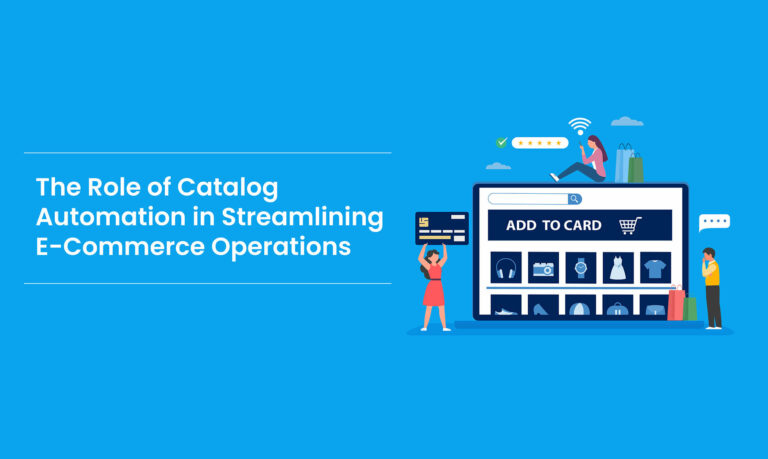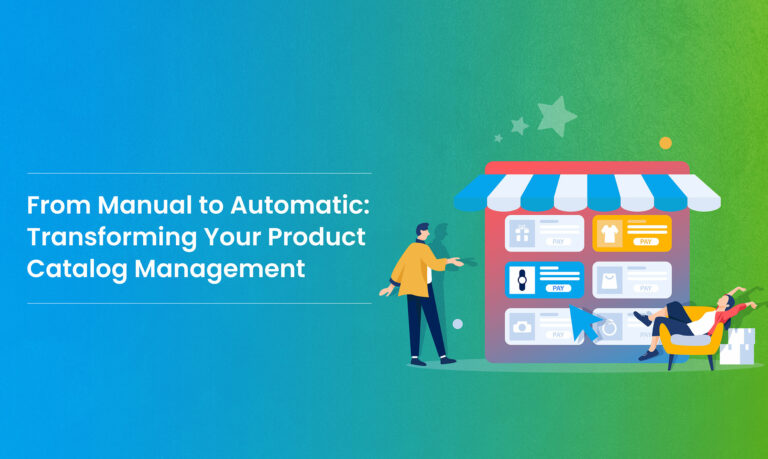Introduction
In the fast-paced business world, adopting an automated cataloging system isn’t just a choice; it’s a strategic imperative. For businesses, seamless data orchestration is key to staying ahead. Let’s explore the transformative world of automated cataloging. Read below to learn more about the automated cataloging system and the advantages that tools like Rubick.ai bring to the table!
What is an Automated Cataloging System?
An automated cataloging system represents a technological leap in managing vast datasets. It uses advanced algorithms and machine learning to systematically organize and categorize data, reducing reliance on manual efforts and minimizing errors. This digital assistant not only streamlines operations with user-friendly interfaces but also evolves over time, learning from patterns and optimizing catalog organization. It becomes an invaluable ally for decision-makers, offering efficiency and strategic advantage through precise and organized insights.
Imagine a tool that not only automates but adapts, ensuring scalability and intelligence in data management. An automated cataloging system is not just a static solution; it’s a dynamic force reshaping how organizations interact with and derive value from their data, providing a powerful edge in the fast-paced world of business decision-making.
Key Features Shaping Automated Cataloging Systems
The key features shaping automated cataloging systems define their effectiveness in transforming data management:
1. AI Integration for Intelligent Sorting
The integration of artificial intelligence is a pivotal feature in automated cataloging systems. By incorporating smart algorithms and machine learning capabilities, these systems go beyond basic categorization. They intelligently analyze data patterns, adapting and refining their organization methods over time. This not only enhances the precision of cataloging but also ensures that the system evolves, keeping pace with the dynamic nature of business data.
2. User-Friendly Interface for Seamless Navigation
The user-friendly interface is another critical aspect. It serves as the gateway for users to interact seamlessly with the system. This intuitive design simplifies navigation, making it easy for individuals, even those without extensive technical backgrounds, to retrieve and utilize data effectively. The accessibility of these interfaces contributes significantly to the overall usability of automated cataloging systems.
3. Scalability for Longevity
Scalability is a feature that addresses the longevity of these systems. In the face of growing data volumes, automated cataloging systems are designed to expand effortlessly. This ensures that they remain robust and relevant, accommodating the ever-increasing demands of an organization’s data landscape. The combination of AI integration, user-friendly interfaces, and scalability makes automated cataloging systems powerful tools for efficient and adaptable data management.
Advantages Tailored for Decision Makers
The advantages of automated cataloging systems are particularly tailored to meet the needs of mid-management decision-makers:
1. Time as a Strategic Resource
For business professionals, time is precious. Automated cataloging liberates time by reducing manual efforts, enabling decision-makers to focus on strategic analysis and informed decisions.
2. Data Accuracy as a Foundation
The reliability of decision-making hinges on accurate data. Automated systems eliminate the risk of human errors in cataloging, ensuring that mid-management leaders have access to precise and trustworthy information and fostering confidence in their strategic choices.
3. Strategic Insights for Informed Choices
The organized and accessible nature of cataloged data provides mid-management decision-makers with strategic insights. Armed with accurate information, they can navigate market dynamics more effectively, gaining a competitive edge in decision-making.
These tailored advantages empower organizations to optimize their workflow, make informed decisions, and strategically steer their teams toward success in a dynamic business environment.
Challenges and Solutions in Automated Cataloging Systems
Here’s a look at a few challenges that are a part of automated cataloging systems.
Integration Prowess:
Challenge: Seamless integration of an automated cataloging system into existing workflows can pose initial challenges. Resistance to change and potential disruptions during the integration phase may be concerns for organizations.
Solution: Strategic planning is crucial. Collaborating closely with the system provider and conducting thorough training programs can alleviate integration concerns. Ensuring a phased implementation approach minimizes disruptions and allows for a smoother transition.
Security Imperatives:
Challenge: With the increasing importance of data security, concerns about safeguarding sensitive information within automated cataloging systems arise. Ensuring robust security measures is paramount.
Solution: Automated cataloging systems often come equipped with advanced security features. Regular audits and compliance checks should be conducted, and encryption protocols must be in place to fortify data security. Engaging in ongoing communication with system providers ensures alignment with evolving security standards.
Navigating these challenges requires a strategic approach, collaboration with technology providers, and a commitment to ongoing evaluation and improvement. The solutions presented address concerns while maximizing the benefits of automated cataloging systems for organizations.
Strategies for Effective Catalog Management
The following are strategies for effective catalog management that businesses can implement.
1. Regular Audits for Alignment
Conducting periodic audits of the automated cataloging system is essential to ensure it aligns seamlessly with the evolving dynamics of the business. Regular reviews identify potential gaps, allowing for adjustments to maintain optimal functionality and relevance.
2. Customization for Precision
Tailoring the automated cataloging system to meet specific organizational requirements is a strategic approach. Customization enhances precision, ensuring that the system is finely tuned to address the unique needs and nuances of the business.
3. Training Programs for Proficiency
Investing in comprehensive training programs for the team is key. Ensuring that all members are proficient in using the automated cataloging system maximizes its utility and contributes to overall efficiency, fostering a more empowered and adept workforce.
Implementing these strategies not only optimizes catalog management but also positions the organization for sustained success in navigating the complexities of data organization and utilization.
Future Prospects in Automated Cataloging
As we look forward, the landscape of automated cataloging appears dynamic and promising, with technological advancements poised to reshape how organizations manage and derive value from their data.
- Integration with Emerging Technologies
The future of automated cataloging brings exciting possibilities through the integration of emerging technologies like blockchain, augmented reality, and advanced data analytics. This promises to elevate catalog management systems, providing sophisticated insights and streamlining data organization.
- Enhanced Predictive Analytics
Anticipating the future requires a focus on predictive analytics in automated cataloging. Enhanced modeling and algorithms will empower organizations to understand historical data and foresee trends, offering a proactive edge in decision-making and strategic planning.
- Interconnected Ecosystems for Seamless Collaboration
The future sees interconnected cataloging ecosystems promoting seamless collaboration across diverse platforms. This ensures seamless data flow, fostering a unified catalog management approach. This interconnectedness empowers organizations with comprehensive insights, facilitating more informed decision-making. This collaborative ecosystem stands as a pivotal prospect in the evolving landscape of automated cataloging.
The Role of Rubick.ai in Automated Cataloging Excellence
At the forefront of innovation, Rubick.ai emerges as a pivotal player in revolutionizing automated cataloging. With advanced features and an unwavering commitment to excellence, Rubick.ai plays a transformative role in elevating catalog management for mid-management decision-makers.
1. Innovative Features: Rubick.ai integrates cutting-edge technologies such as artificial intelligence and machine learning, amplifying the capabilities of automated cataloging. Its intelligent sorting algorithms ensure not just efficiency but a continuous learning process, adapting to evolving data patterns and optimizing catalog organization dynamically.
2. User-Centric Design: The user-friendly interface of Rubick.ai makes the automated cataloging process accessible and intuitive. This design ethos ensures that mid-management professionals can navigate and utilize the system seamlessly, unlocking the full potential of their data without unnecessary complexity.
3. Scalability and Reliability: Rubick.ai stands out for its scalability, designed to accommodate growing data volumes effortlessly. Its robust infrastructure ensures the reliability of cataloged data, providing mid-management decision-makers with a trustworthy foundation for strategic insights and decision-making.
Conclusion
The realm of automated cataloging unveils a paradigm shift for organizations, providing a strategic edge in navigating the complexities of modern business. As challenges are met with solutions and strategic approaches like regular audits and customization are implemented, the path to effective catalog management becomes clear.
Rubick.ai emerges as a beacon of excellence, offering innovative features and a user-centric design. Its role in reshaping automated cataloging goes beyond technology – it becomes a partner empowering organizations to not only manage their data efficiently but to elevate decision-making to new heights. The journey towards efficiency and strategic prowess is epitomized in the seamless integration of automated cataloging, culminating with the transformative impact of Rubick.ai.

